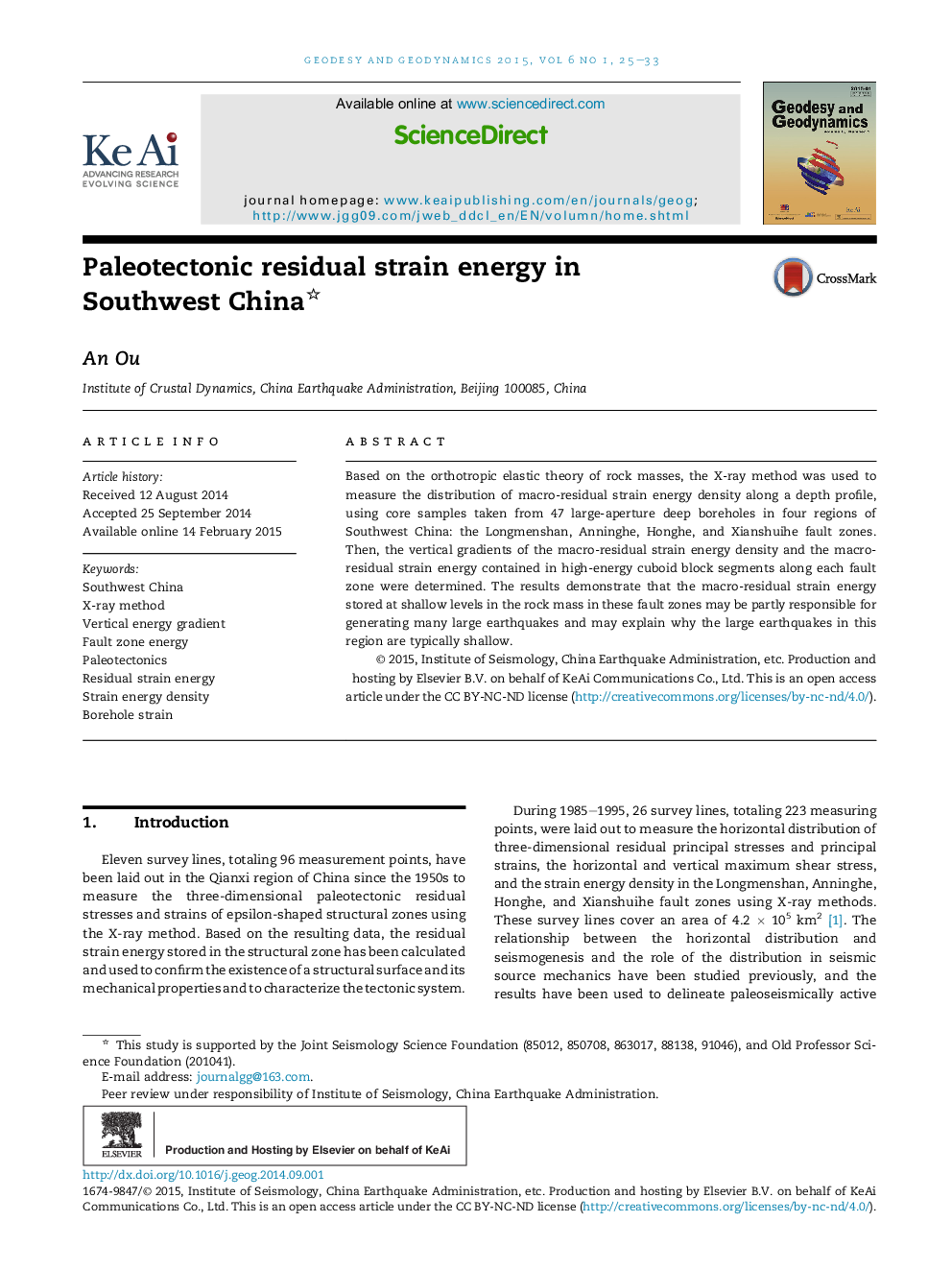| Article ID | Journal | Published Year | Pages | File Type |
|---|---|---|---|---|
| 4683574 | Geodesy and Geodynamics | 2015 | 9 Pages |
Based on the orthotropic elastic theory of rock masses, the X-ray method was used to measure the distribution of macro-residual strain energy density along a depth profile, using core samples taken from 47 large-aperture deep boreholes in four regions of Southwest China: the Longmenshan, Anninghe, Honghe, and Xianshuihe fault zones. Then, the vertical gradients of the macro-residual strain energy density and the macro-residual strain energy contained in high-energy cuboid block segments along each fault zone were determined. The results demonstrate that the macro-residual strain energy stored at shallow levels in the rock mass in these fault zones may be partly responsible for generating many large earthquakes and may explain why the large earthquakes in this region are typically shallow.
